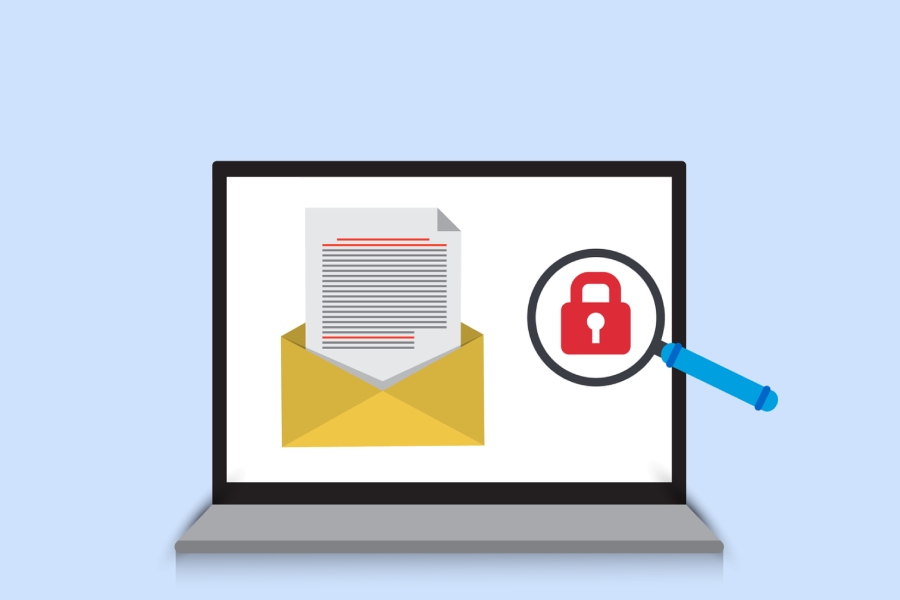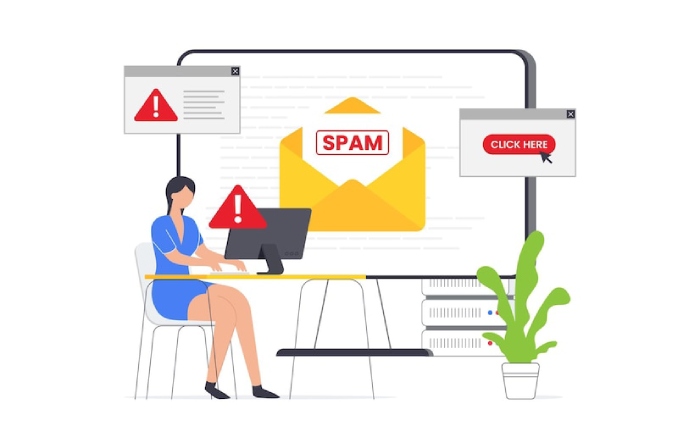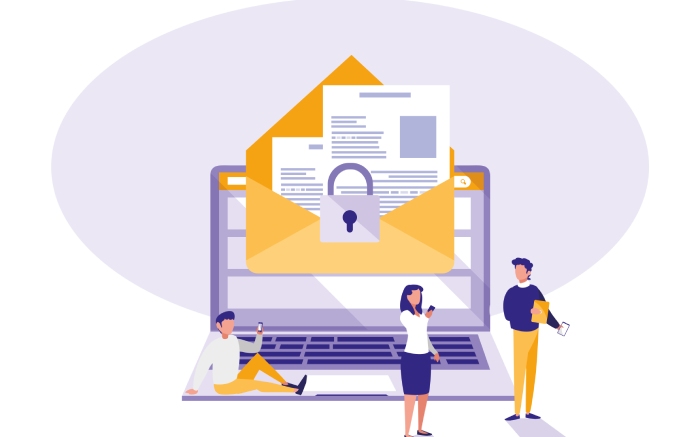While website security tools secure the data that passes from server to browser, email security tools prevent unauthorized access to email accounts, content, and communications. In general, the safety of email servers tends to be limited to problems with messaging and the application of security measures that have more to do with anti-virus and anti-spam protection. If a business is dependent solely on a platform such as Gmail or MS Outlook, it does not need to focus on protecting email servers. However, when one decides to implement and maintain a dedicated email server, one must employ spam protection, phishing protection, ransomware protection, and other advanced safeguards against email threats.
Recent Statistics Regarding Email Security
The following statistics on email-based threats are alarming. All of them show why email security should be an organization’s top priority.
- Cybercrimes have increased by 600% since the onset of Covid-19, which means emails and online data are at a more significant risk than before.
- According to the 2021 Email Security Benchmark Report, email security has been ranked as the top IT security project of 2021.
- IC3 reports that BEC (Business Email Compromise) attacks are the costliest attacks and point to a loss of $1.8 billion.
- Phishing is the most common way of attacking organizations by malicious actors, and they created nearly 6.95 million phishing pages in 2020.
- Over 90% of digital attacks start with targeted malicious emails.
How to Secure Your Mail Server
Securing an email server is not based on a single, centric technique. It has various facets, and there are multiple tools to deploy to ensure the complete security of an email server. Here are the top 10 aspects to keep in mind to secure a mail server.
- SMTP Authentication: SMTP (Simple Mail Transfer Protocol) authentication helps prevent unauthorized account access and better email security when sending messages between domains on the mail server. SMTP authentication is the standard communication protocol of the Internet for email transmission. One must know which accounts send emails through the SMTP server and how it is configured.
- Mail Relay Configuration: The configuration of mail relays allows spammers to use a mail server as a gateway to send spam messages. It results in compromising email security and subjecting an organization to incidents, such as spear-phishing attacks. Hence, it is recommended to allow only specific addresses and domains to which you want to send emails. Make sure that the mail relay configuration is not open to all relays.
- DKIM Protocol: DomainKeys Identified Mail (DKIM) protocol is an email authentication technique that allows the recipient to verify that the email has been sent by the authorized domain owner, ensuring email security and integrity. DKIM intends to prove that the content of an email message has not been manipulated, message headers have not been changed to add a new address, and the sender of the email message owns the domain with the attached DKIM entry. This helps identify senders and helps in phishing protection.
- SPF Implementation: Sender Policy Framework (SPF) allows the server to send server MX (Mail Exchanger) records, DNS (Domain Name System) records, and email exchange records to validate messages before they are transmitted. By activating the Sender Policy Framework (SPF) on an email server, one can ensure that the MX and email exchange records are validated on the sending server before a message is sent.
- Reverse DNS: Reverse DNS is the reverse of a regular DNS lookup which means it looks up a domain using an IP address. Enabling reverse DNS security searches strengthens the SMTP server and offers ransomware and phishing protection. Maintaining a local IP blacklist of the email server allows better spam filtering and improves network and email security.
- DNSBL And RBL Implementation: DNSBL (Domain Name System-based Blackhole List) and RBL (Real-time Blackhole List) use the DNS protocol to query known IP addresses for complaints about sending worms, viruses, and junk mail. Most mail servers can query DNSBL to determine whether a particular IP address is on the list. One must utilize these features and keep the server free of spear phishing and spam emails.
- Encryption Techniques: The Internet Message Access Protocol (IMAP4) and the Post Office Protocol (POP3) specify how email clients download messages from an SMTP server. Always encrypt IMAP4 and POP3 and pair them up with TLS (Transport Layer Security) to encrypt all transmitted data to ensure ransomware protection, protection against eavesdropping attacks, and security from MITM (Man in The Middle) attacks.
- SURBL Usage: SURBL (Spam URI RBL) is like DNSBL in that it lists domain names from unsolicited emails. However, SURBL only lists domain names that appear in URIs (Uniform Resource Identifier), such as websites mentioned in the email body. Implementing SURBL for blocking malicious URIs can help implement better email security as well.
- S/ MIME And PGP Encryption: Instead of SMTP, one can also implement S/ MIME (Secure/ Multipurpose Internet Mail Extensions) or PGP (Pretty Good Privacy). This action allows a user to add digital signatures to their emails for better verification and security. It can also encrypt the outbound SMTP during transmission to protect against MITM (Man in the Middle) attacks.
- DMARC Authentication: To manage messages that fail authentication or recipient policies, DMARC notifies the mail server when an email from a domain does not pass the SPF or DKIM check. DMARC is most effective for organizations to validate email senders and ensure phishing and ransomware protection. A DMARC record allows the sender to indicate that their message is protected by SPF, while the DKIM component tells the recipient that the email is not spoofed.
Final Words
Organizations have the option of buying email server software solutions or buying and maintaining their email server. Email security should be their topmost concern to protect the organization and its employees if they choose the latter. As the protection against email threats evolves, so do the attacks. That is why it is necessary to safeguard email servers at all levels for phishing and ransomware protection. No email server is 100% secure, but implementing the above techniques and extra protection using firewalls, MFA (multi-factor authentication), and content filtering can protect an email server from most threats.


